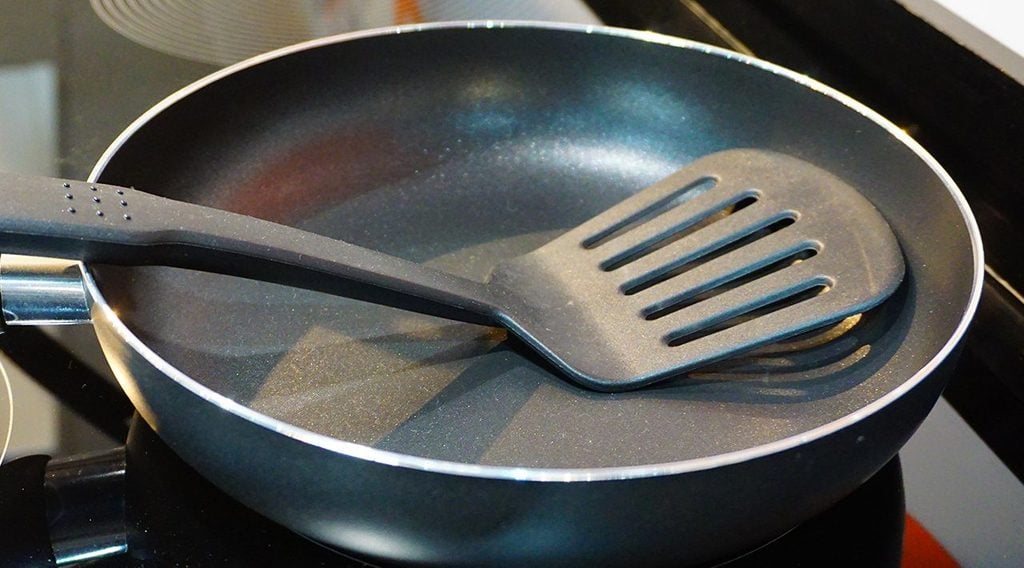How to Know When to Throw Away Nonstick Pans
Updated: Mar. 20, 2023

When was the last time you replaced your skillet? Can't remember? This is when to throw away your nonstick pan.
You’ve had it forever hanging above your stove, at the ready. Lately, it’s looking a little worse for the wear—so what’s the big deal?
Nonstick pans are covered using a chemical called Teflon. Teflon makes the pan easy to clean, and allows for cooking without using much butter or oil. The problem? Teflon breaks down and can be cause for concern. Before you toss your nonstick pan, look for these tell-tale signs that you should pick up a replacement.
Sign 1: The pan is warped
Warping is not necessarily dangerous, but it can mean that your food quality won’t be its best. When a pan is warped, your cooking surface will be uneven and your food won’t cook uniformly. To ensure your food is all cooked at the same temperature—and safe for consumption—you may just want to play it safe and chuck the warped pans.
Sign 2: Dark discoloration
Not all discoloration is bad—it’s caused by food build up over time. Some light discoloration isn’t a big deal, but once it’s dark it could mean the nonstick coating has been damaged. At that point, it’s time to replace the pan.
Sign 3: You see significant scratches
Scratches are definitely a deal-breaker—in older pans. Before 2013, pans were manufactured using Teflon that contained a hazardous man-made chemical called Perfluorooctanoic acid (PFOA). PFOAs were proven to contain cancer-causing chemicals, and now Teflon is required to be manufactured without these dangerous compounds. If you see scratches, that means the nonstick Teflon surface has been compromised and the chemicals could be flaking off into your food. Not good! To be safe, once a pan is scratched it’s gotta go.
Nonstick pans do not last forever
A good rule of thumb is to replace them approximately every five years. Look at your pans frequently. When they start to appear warped, discolored, or scratched, be sure to stop using them. If you’re looking for replacement pans, check out our guide to every type of frying pan out there.
Can you repair your nonstick pan?
You can! You can try a nonstick cookware repair spray—though watch for scratches through the clear spray. Cleaning your nonstick pan with nonabrasive scrubbers and cleaners will help extend their life. When cooking up a creamy, fluffy omelet in your nonstick pan, use utensils like silicone or soft wood that won’t scratch. Finally, store your pans without stacking things on top of them that could scratch the surface. What about a cast-iron pan?